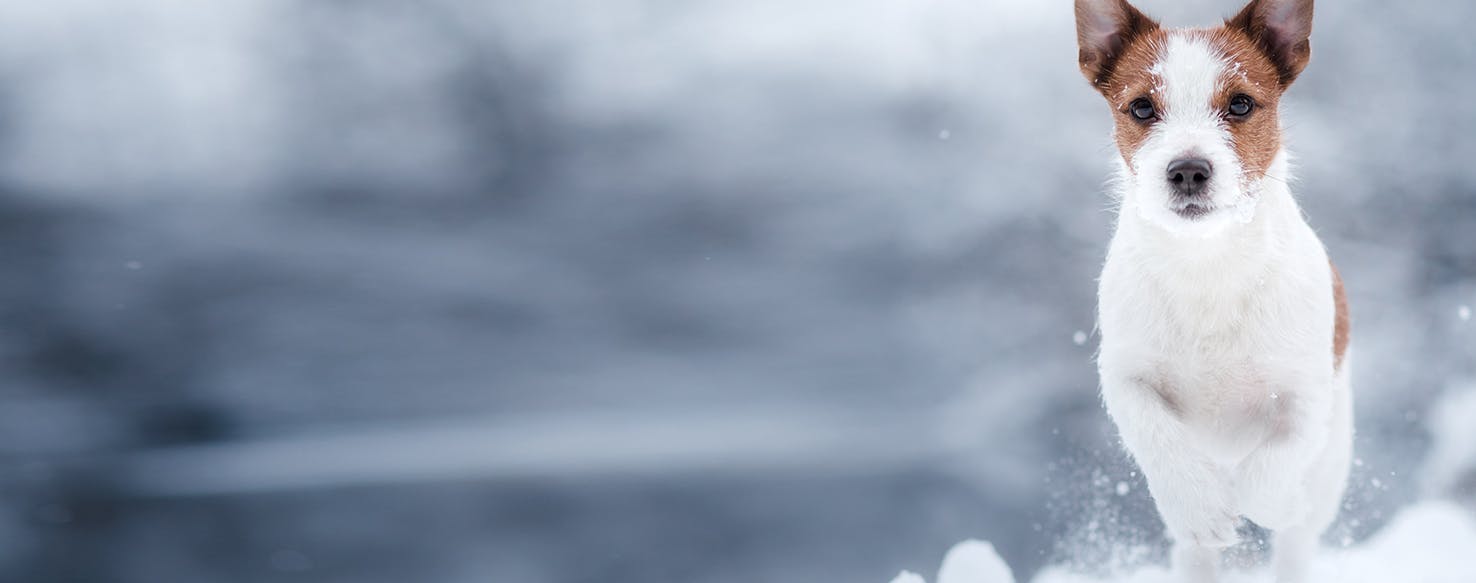- Home
- The Daily Wag!
- Behavior
- Why Do Dogs Put Their Noses In The Snow
Why Do Dogs Put Their Noses In The Snow

Common
Normal
Introduction
Is there anybody who loves winter more than children and dogs? If you’re not the one in charge of shoveling the snow in front of the driveway every morning, you probably do too. But there is something about snow that has your dog absolutely charmed. One of their favorite winter activities is to stick their noses in the icy layers of snow and play around in it. How many times have you noticed your dog doing the same thing? Whether out of excitement or simple curiosity, dogs put their noses in the snow for a couple of reasons. Let’s find out more about what makes them so thrilled about this winter sport.
The Root of the Behavior
When winter comes around, we cannot wait to curl up in a blanket on the couch and enjoy a nice cup of cocoa in front of the TV. The same cannot be said about our furry best friends. The colder the weather, the more energetic they get. It seems they are able to run around and play like never before. This is because the colder weather can bring out the inner dog in your dog. In other words, they can run around and play more, because they don’t run the risk of overheating. It relates to the sensory qualities of snow and the bracing effects of cold weather. So, if you happen to live in a low temperate area, you will most likely see your pup digging up the snow more than usual.
What’s so fascinating about searching through piles of cold, icy snow? A dog’s sense of smell allows them to gather information about other dogs and about their surrounding environment. Dogs love to investigate and manipulate their territory. For some dogs, snow is just another toy to play with, while for others, it's a way to find out more about the world around them. Some of the most interesting reasons a dog will put their nose in the snow relate to urine spots, signs of squirrels, bird tracks, poop, or trash spots. Most of all, dogs enjoy the sensory characteristics of snow and the way it changes the environment. This has a lot to do with visual appearance, but most of all… it’s about the scent. In general, dogs go around sticking their noses into everything. Add to that the excitement of frolicking in the snow and you’ll have a better idea as to why they love putting their noses into it and flinging it up in the air.
Need advice about your pet's health?
Get answers fast from a veterinary professional 24/7 in the Wag! App.
Get Vet ChatEncouraging the Behavior
From tossing snowballs, building snow forts, and hurdling yourself down snowy hills on sleds, dogs enjoy playing in the snow just as much as kids do. Maybe because it’s something new and different or because it allows them to play more without overheating. Perhaps, the very sensation of snow on the body is engaging for dogs and makes them drawn to its taste and scent. How can you keep your dog active during winter when all you want to do is relax and sip on your cocoa?
Have you ever thought about hiring a professional dog walker to take him out on those cold days? If you don’t have the time nor the energy to do so, don’t let him miss out on all the fun. Otherwise, make the most of your time outside and let your pup join in your daily activities. Take your canine snow-shoeing or let them “help you” shovel by catching snow piles as you fling them. Also, you could hide your pup’s favorite toys in snow piles and enjoy as they'll dig and hunt to find them. If he needs more exercise, attach a sleigh on to your dog’s harness and let them pull a sled. Just make sure it’s the right weight amount for the type of dog you have.
Other Solutions and Considerations
If the weather is freezing cold, make sure you limit the time he spends outside, as he could get frostbite or hypothermia when the temperature drops. More so, don’t let your pup stay outside by himself, because he could get in contact with the treated pavement. Spilled antifreeze on driveways is common during the winter and he might lick the road, due to its distinctive smell and taste. Be sure to wipe your pup’s paws as soon as you come back in and check them to make sure snow or ice didn’t collect between your dog’s toes. Use a small amount of petroleum jelly to soften and soothe paw pads if you notice that it has.
Conclusion
It is important to keep your dog active outside during colder weather, even if it’s not the most pleasant time for you. Whether you hire a professional or play with him yourself, be careful about your dog’s sniffing behavior while frolicking in the snow. Most of all, let them enjoy themselves with some much needed outdoor time, digging, chasing, and running in the snow as they please.
Written by a Amstaff lover Marieta Murg
Veterinary reviewed by:
Published: 04/04/2018, edited: 01/30/2020
More articles by Marieta Murg
